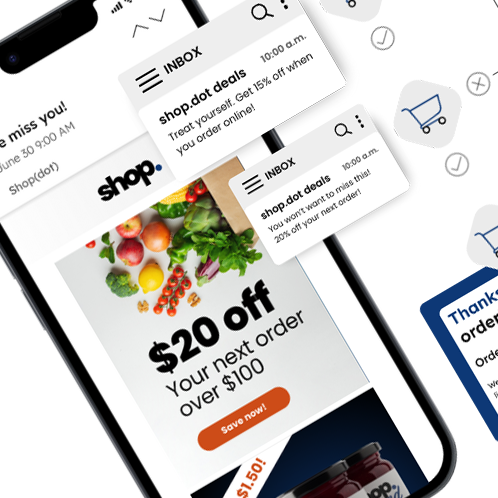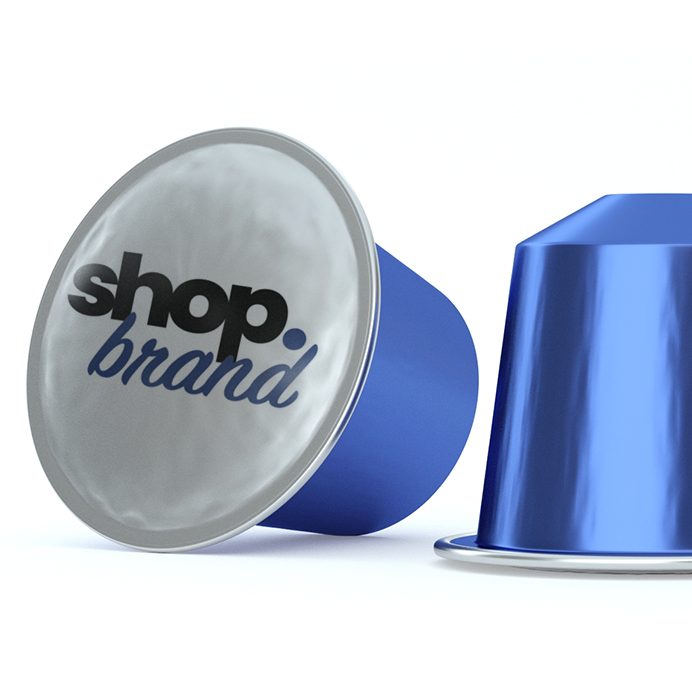Research
I closely examined customer and prospect websites and pulled old swipe files of private label grocery brands. Inspired by No Name and the URL of the pre-merger demo space, we chose to call it Shop(dot). It's what it says on the can.
Logo Exploration
The logo options were built with a very simple visual language.
It's the Tintin of logos. Hergé drew the backgrounds lushly and the characters sparingly, pushing all of his readers to imagine themselves there. In demos and marketing material, it needed to look grocery but be so invisible that our customer's eyes would slide right past the logo. At the same time, the banners, offers, and marketing copy needs to be detailed, specific and authentic.
In-universe Assets
Based on our target addressable market, I made a short brand guideline (PDF link), outlining the services, differentiators and size of shopDot. I created months worth of banners and ads for our fake grocer, separated by persona. To demonstrate how our customers can sell ad space on their eCommerce site I faked numerous CPG ads (not shown here).
Cross-team Implementation
To get the pretty logo and brand colors on the very first, very rough version of the testing site, I collaborated with the product team and operations. Product used the original figma designs to translate our "brand" colors onto the white-label site. Operations created the architecture of the site from the highly customizable widgets/layout managers, then trained me to update banners on my own. It was a small-scale version of onboarding a "real" retailer and a great dry-run.
This was happening on a testing site, so the codebase was still being written as we worked. The latest step has been to migrate Shop(dot) to the newest version of the code, and it now lives in a real tenant, just like our retailers will. The fake grocery store is helping Marketing understand our customer pain points and opportunities. The knowledge I've gained designing Shop(Dot) is being applied to ad copy and positioning, as well as speeding up product imagery production.






